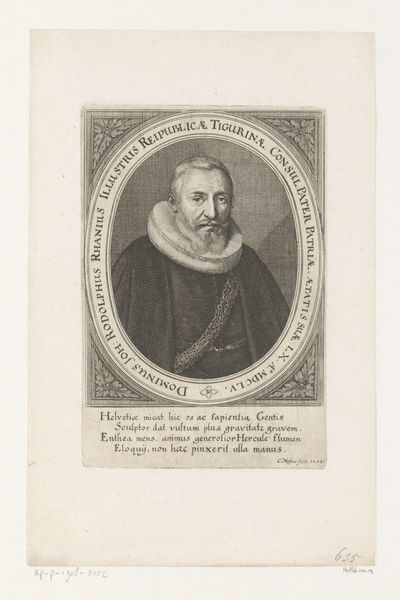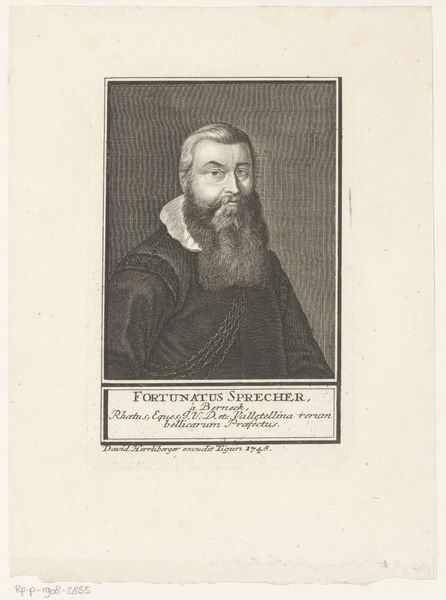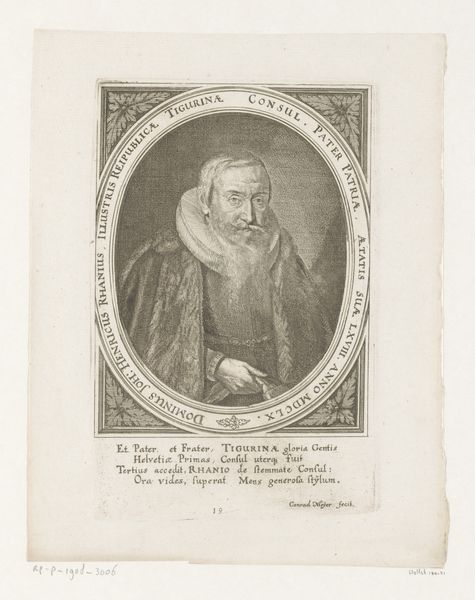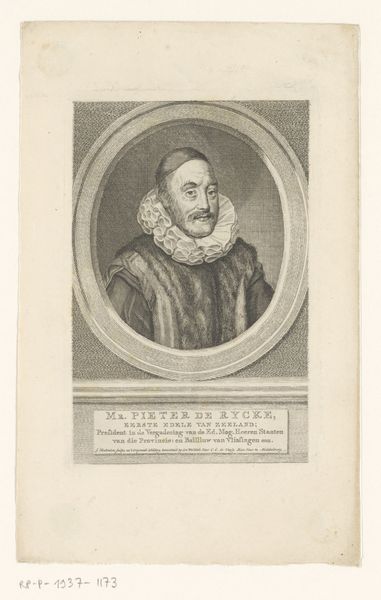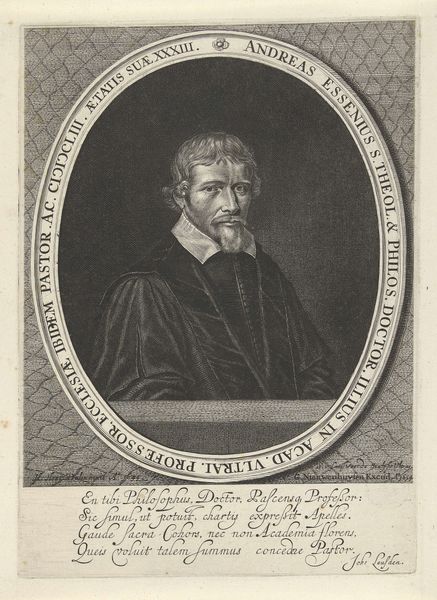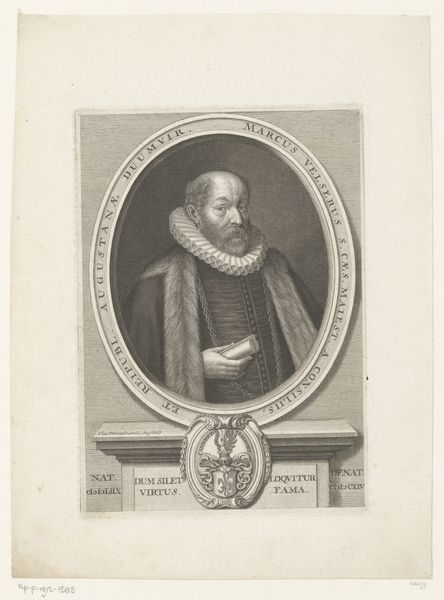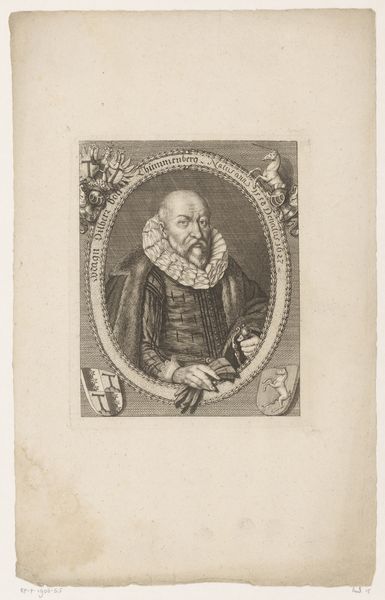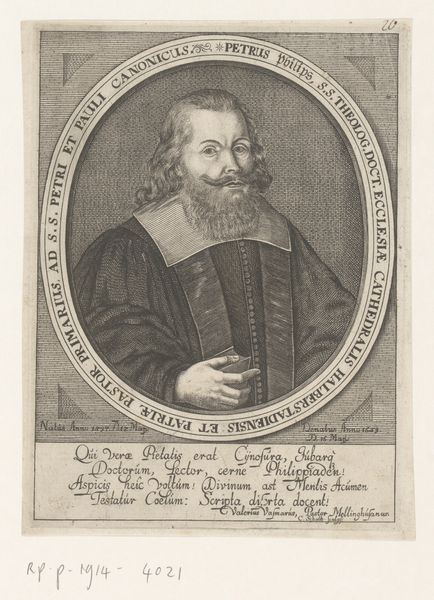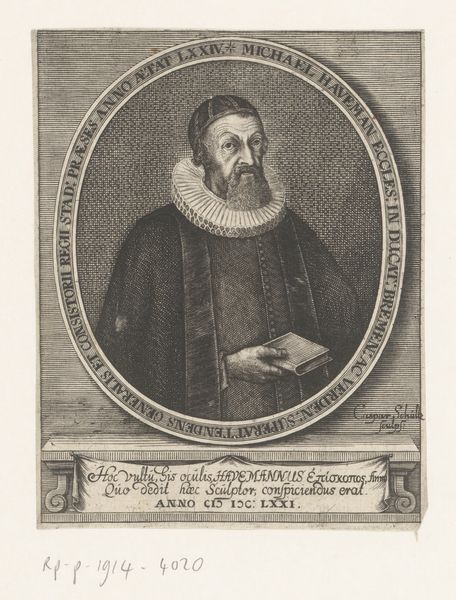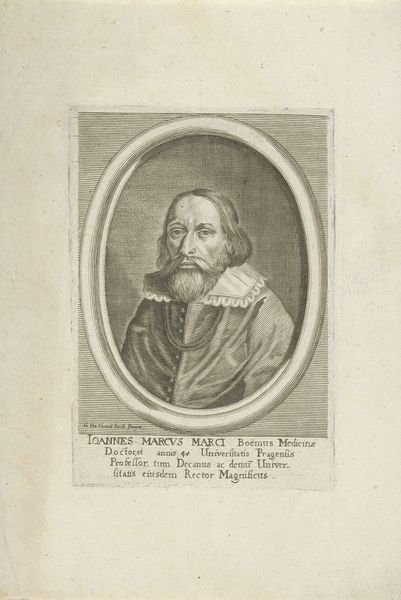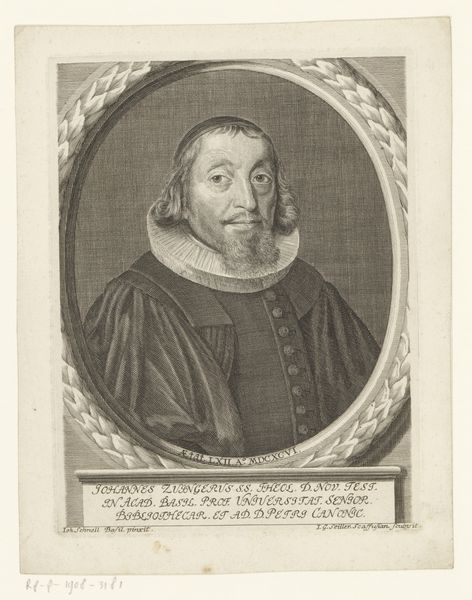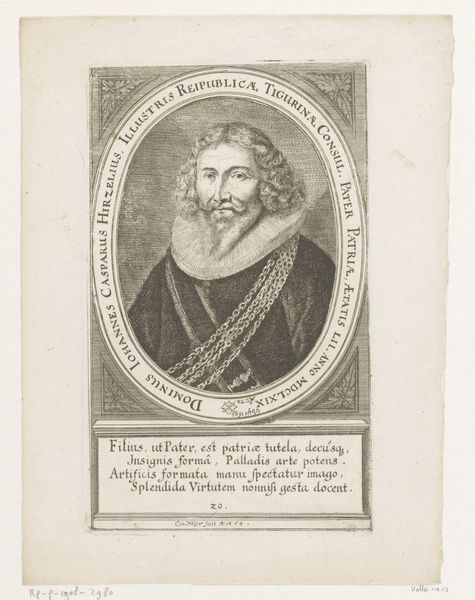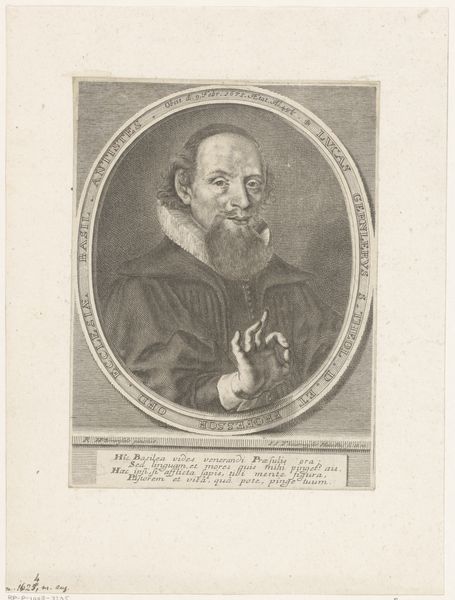
engraving
#
baroque
#
history-painting
#
engraving
Dimensions: height 228 mm, width 154 mm
Copyright: Rijks Museum: Open Domain
Curator: Here we have a stately portrait, an engraving by Conrad Meyer dating back to 1672. It depicts Johann Caspar Suter. Editor: Immediately, I'm struck by how quietly powerful it feels. It’s just a head and shoulders shot, but there's a palpable weight, like he's holding the gaze of centuries in his eyes. The monochrome palette also gives it such seriousness. Curator: Absolutely. Meyer has masterfully used engraving to capture Suter's character. Notice the careful detail on his face and the scholarly book that he's holding. Those details and elements offer insight into his life and vocation as an Archidiaconus. The baroque style is unmistakable. Editor: And that high, white collar! Visually, it creates this stark contrast. Purity? Austerity? It certainly anchors him in his time. I wonder if he chose to be portrayed with that particular garb. Curator: Very possibly. Portraits then weren't mere likenesses but deliberate statements. The book in his hands connects to scripture and a life of contemplation. We read him now as a product of historical expectation and of the visual cues embedded within that period. Editor: So true. Visual languages are so embedded and potent. His gentle hand resting on the open pages, it’s a symbol of erudition, devotion... and perhaps vulnerability too? Is that something Conrad Meyer intentionally embedded in this depiction? Curator: That’s such a lovely reading. Meyer does well to present a sensitive portrayal within a structured social and stylistic framework. The history painting style helps imbue him with respect and with the era’s particular flavor and visual storytelling language. Editor: It makes me ponder how many layers we are peeling back every time we consider even a 'simple' portrait like this one. Curator: Agreed. Each viewing is an intersection between past intention and our current interpretation. We learn a bit more about Suter, about Meyer, about the time period… and ourselves. Editor: Indeed. We glimpse history, symbol, and, maybe, a quiet whisper of the man himself.
Comments
No comments
Be the first to comment and join the conversation on the ultimate creative platform.
